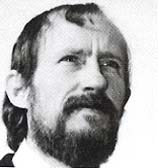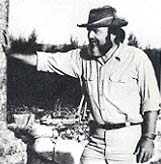Inside BAR
004

The historic period from the 13th century to the sixth century B.C. is known as the Iron Age. Before the Iron Age, iron artifacts existed, but iron was considered an exotic, semiprecious metal. Metallurgists and archaeologists have only recently begun to apply modern scientific techniques to the study of early metal artifacts. After five years of research, a team at the University of Pennsylvania has already produced intriguing results. In “How Iron Technology Changed the Ancient World—And Gave the Philistines a Military Edge,” James D. Muhly presents new interpretations of the sweeping cultural changes that characterized the Mediterranean world at the end of the Bronze Age and the early part of the Iron Age. Many of these changes are reflected in events described in the Bible and help elucidate a number of well-known Biblical passages.
Muhly, Professor of Ancient Near East History and Chairman of the Ancient History Program at the University of Pennsylvania, is known to BAR readers who have followed the Ebla controversy. He reviewed Paolo Matthiae’s and Giovanni Pettinato’s Ebla books in Books in Brief, BAR 07:06. Since 1965, Muhly has been researching metal trade and production throughout the ancient world. In pursuit of this interest, he recently co-edited The Coming of the Age of Iron (Yale University Press, 1980). Muhly spent the past year on a research fellowship at the Albright Institute in Jerusalem. He also directs excavations at Tel Michal and Tel Gerisa on Israel’s Mediterranean coast.
Muhly is married to Dr. Polymnia Metaxa-Muhly, a Greek archaeologist who has been excavating on the island of Crete since 1973. The Muhlys’ three children have occasionally worked on digs with their father in Israel, but insist that they hear more than enough about archaeology at home and plan to devote their lives to “more serious pursuits.”

For centuries, guides have told tourists that remains of a curious octagon-shaped building in Capernaum were the walls of St. Peter’s house. Scholars, needless to say, have been skeptical, but new excavations beneath the building may vindicate the tour guides at least in part: the octagon-shaped building is not St. Peter’s house, but a building under it probably is. James F. Strange and BAR editor Hershel Shanks present the evidence in “Has the House Where Jesus Stayed in Capernaum Been Found?”
Strange is Dean of the College of Arts and Letters at the University of South Florida and Professor in the university’s Department of Religious Studies. He has left Tampa every summer for the past ten years to serve as associate director of the Meiron Excavation Project in the Upper Galilee. In 1980, he spent an additional six months in Israel, in Capernaum and Jerusalem, researching archaeological remains relating to Jewish Christianity. This past summer, he also directed a survey of the Lower Galilee, principally at Sepphoris and Canal. Strange and his wife have four children, all of whom have excavated with their father in Israel. “The oldest is 21 and the youngest is 5, ” says Strange, “and they all know how to wash pottery.” During the academic year, Strange is a popular lecturer at colleges, churches, and synagogues. In Tampa churches, he is both a lecturer and solo singer.

Scores of English translations of the Bible are now available to the scholar, to the student, and to the reader, whatever his or her special needs. In this issue, BAR surveys and reviews several of the popular and the unique in English Bibles. Dewey M. Beegle, Professor of Old Testament at Wesley Theological Seminary in Washington, D.C., expertly guides BAR readers on a historical tour of Bible translations, with special emphasis on recently published works, in “What Does the Bible Say?”
Before Beegle began his long and distinguished career in the ministry and in academia, he worked as an elementary school teacher in Washington State and as an immigration inspector in San Francisco. Beegle has excavated at Shechem, Gezer and Heshbon and has published numerous books, including, most recently, Prophecy and Prediction (Pettingill, 1978). In his hometown of Washington, D.C., Beegle has been a popular lecturer at the Smithsonian Institution.

During the past year, BAR has presented several opposing and controversial theories about the location and dating of the Exodus. In this issue, Yehuda T. Radday joins the debate and brings an entirely new perspective to it, in
Completing an assignment in a graduate-level Biblical Archaeology course resulted in one student’s becoming a BAR author. Professor Larry Geraty of Andrews University gave his class an assignment to write a BAR Jr. column. We are pleased to publish Rodney Wright’s paper submitted in response—“‘Lachish and Azekah Were the Only Fortified Cities of Judah That Remained’ (Jeremiah 34:7).” A theology graduate of Pacific Union College, Wright is now an M.A. Candidate in Biblical and Cognate Languages at Andrews.
The historic period from the 13th century to the sixth century B.C. is known as the Iron Age. Before the Iron Age, iron artifacts existed, but iron was considered an exotic, semiprecious metal. Metallurgists and archaeologists have only recently begun to apply modern scientific techniques to the study of early metal artifacts. After five years of research, a team at the University of Pennsylvania has already produced intriguing results. In “How Iron Technology Changed the Ancient World—And Gave the Philistines a Military Edge,” James D. Muhly presents new interpretations of the sweeping cultural changes that characterized the Mediterranean world […]
You have already read your free article for this month. Please join the BAS Library or become an All Access member of BAS to gain full access to this article and so much more.
